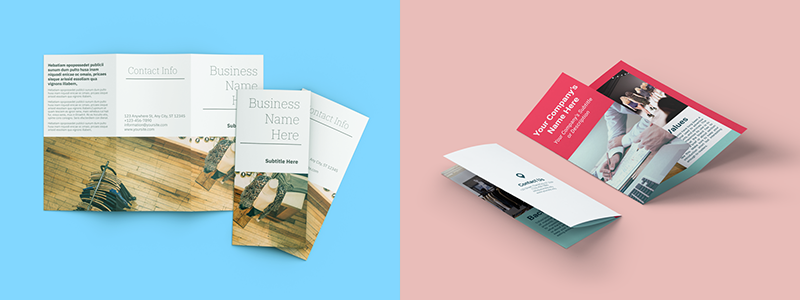1. Understanding the Importance of Business Cards
In an era dominated by digital interactions, the tactile nature of business cards stands as a refreshing reminder of personal connectivity. Beyond simply providing contact information, these compact cards serve as a brand’s physical representative. Every element – from the texture to typography – tells a story. Their tangible nature offers a unique, memorable touch, which can often lead to more fruitful connections compared to a digital link or QR code.
2. Design Considerations
- Graphics and Logos: High-resolution imagery ensures that your card retains a professional and sharp appearance. It prevents pixelation, ensuring that your logo remains the hallmark of your brand. Furthermore, the right logo placement can be a focal point, immediately drawing the viewer’s attention.
- Typography: Fonts play an integral role. The choice of typography can convey brand personality – be it playful, serious, artistic, or corporate. Beyond aesthetics, readability is paramount; you wouldn’t want potential clients squinting to decipher text.
- Color Palette: Colors are more than just visual stimulants. They elicit emotions and responses. A lawyer might opt for deep blues, symbolizing trust, while a graphic designer might choose vibrant hues, reflecting creativity.
- Information Placement: The layout requires balance. Vital information shouldn’t be cluttered, yet the card shouldn’t feel sparse. Each detail, from your name to your website, must be easily accessible.
3. Choosing the Right Cardstock
- Thickness: While a thicker card feels more premium and can make a statement, it’s heavier to carry in bulk. Generally, a 14-16pt (point) thickness is standard, but luxe options can go up to 32pt.
- Texture: This is where tactile experience comes in. Linen textures offer a classic feel, while embossed textures can give a sense of luxury.
- Finish: The finish can greatly alter the card’s appearance. A glossy finish can make colors pop, whereas a matte finish provides a subdued, sophisticated look. Uncoated options, on the other hand, can give a natural, raw feel.
4. Size and Shape Options
- Standard Size: Though the typical size in the U.S. is 3.5 x 2 inches, there are variations. In Europe, for instance, slightly larger dimensions are the norm.
- Custom Shapes: Beyond the traditional rectangle, consider options like ovals or even bespoke shapes like a cutout of a product you sell. These distinctive designs are attention-grabbers.
- Folded Cards: Double the space without altering the base size. They can be used to add more information or showcase a mini-portfolio.
5. Printing Techniques
- Digital Printing: A go-to for designs abundant in colors or gradients. Digital printing allows for quick turnarounds and is more cost-effective for small batches.
- Letterpress: An artisanal touch. Each design element is pressed into the card, giving a tactile and visual depth. It’s classic, luxurious, and often used for high-end cards.
- Offset Printing: Perfect for vast quantities, offset printing offers a consistency unmatched by other techniques. It uses plates to transfer the design onto the card, ensuring each card in a batch looks identical.
- Embossing and Foil Stamping: For those looking to add an extra flair. Embossing raises parts of the card for a 3D effect, while foil stamping adds a shiny, metallic accent.
6. Environmentally-Friendly Options
- Recycled Cardstock: Sustainability is a growing concern. Using recycled cardstock not only reduces environmental impact but also sends a message about your brand’s values.
- Sustainable Inks: Traditional inks can be harmful to the environment. Vegetable or soy-based inks are greener alternatives without compromising on quality.
- Digital Proofs: Save trees by proofing digitally. This step is crucial before the final print, ensuring everything is as envisioned.
7. Quantity and Budgeting
Ordering in bulk often reduces the cost-per-card. However, it’s essential to forecast realistically. Consider how often you’ll be handing them out and the likelihood of changes in your contact details or branding in the near future. Adjust quantities accordingly to prevent waste and excess expenditure.
8. Proofreading and Reviewing
Mistakes on business cards can be costly, both in terms of reprints and potential lost business opportunities. Always triple-check for typos, incorrect numbers, or misaligned designs. Solicit feedback from peers or friends – fresh eyes might spot overlooked errors.
9. Storage and Presentation
- Card Holders: An elegant holder not only protects your cards from creases or stains but also offers a more professional presentation than rummaging through your bag or pockets.
- Presentation: A minor detail, but presenting your card with the printed side up ensures immediate recognition and saves the recipient the effort of flipping it.
Your business card is a tactile manifestation of your professional identity. A thoughtful design combined with quality printing can transform this small card into a powerful networking tool, ensuring you leave a lasting impression. Investing time and resources into its creation is an investment in your professional future.



